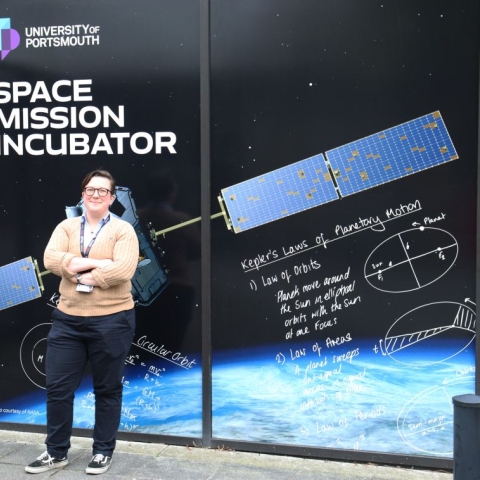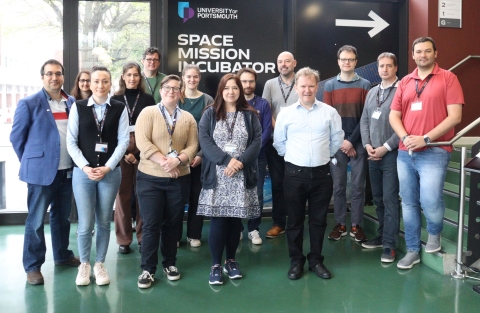

The pilot study involved CosmoCube, a cosmology mission receiving radio waves, that will explore the so-called Dark Ages of the Universe.
18 July 2023
6 min read
The first study in the University of Portsmouth’s new Space Mission Incubator saw science and engineering experts working together in real time to rapidly develop a space mission that will place a small satellite in orbit around the Moon.
The unique new Space Mission Incubator service is inspired by NASA’s Jet Propulsion Laboratory (JPL), who first pioneered the use of concurrent design engineering for space mission design; an innovative approach that allows teams of experts from different disciplines to work in the same place at the same time.
This pilot study involved CosmoCube, a cosmology mission receiving radio waves, that will explore the so-called Dark Ages of the Universe. The project is led by the University of Cambridge, with University of Portsmouth academics also part of the wider team.
Professor David Bacon, from the University’s Institute of Cosmology and Gravitation, is leading Portsmouth’s hopes to send a satellite to the far side of the Moon. He said: “We want to see what happened very far away and extraordinarily long ago, towards the beginning of the universe’s history, before stars even started to shine.
“This is about measuring the behaviour of the early universe, to see what that can tell us about its visible - and invisible - contents.”
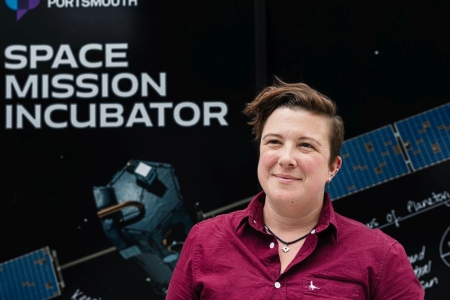
Last summer I spent some time at NASA JPL to see this concurrent approach in action and it’s been amazing to reproduce this at Portsmouth within a year.
Dr Lucinda King, Space Projects Manager
As the signal to be measured is so weak, the satellite needs to be at the far side of the Moon to block all the radio-frequency noise from Earth when making measurements. Testing which lunar orbits could provide the most amount of shielding time from the Earth was a key outcome of the pilot study.
Principal Investigator for CosmoCube, Dr Eloy de Lera Acedo, Associate Professor of radio cosmology at the University of Cambridge, said: “I’ve never been part of anything like this before, but I think CosmoCube evolved more in three days than in the previous 12 months. The room and IT facilities were superb and despite it being the first time they were properly used, it worked extremely well.
“Engaging with industry experts helped the project move fast, but also generated relevant contacts for future collaborations. But what was really key was the incubator steering role as this person had to take the team through the relevant steps at the right time and glue all expertise together. Dr Lucinda King did a superb job in this role. The results of this pilot will now help us to plan the next steps.”
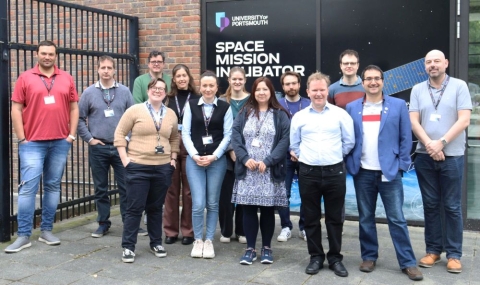
The team of experts worked together over three days in the University's new Space Mission Incubator
One of the world’s largest small satellite providers, Surrey Satellite Technology Ltd (SSTL), based in Guildford, UK, supported the pilot study with a small team of space engineering experts from different disciplines. It was also supported by experts from In-Space Missions and RAL Space.
Steve Eckersley, Head of Mission Concepts Group from SSTL, led the external team. He said: “Being actively involved in studying an early mission concept to probe the very early universe (the so-called “Dark Ages”) around the far side of the Moon with a very small satellite, was fascinating for all involved.
“Supporting the University of Portsmouth’s Mission Incubator and this CosmoCube study is strategically important for SSTL to ensure the industrial space engineering know-how is included in the early concept phase and will also position SSTL to potentially lead any future missions resulting from these studies.”
Space Projects Manager at the ICG, and manager of the Space Mission Incubator, Dr Lucinda King, said: “It’s been really exciting to work on this pilot project in our brand new facility. Last summer I spent some time at NASA JPL to see this concurrent approach in action and it’s been amazing to reproduce this at Portsmouth within a year.
“Space mission design has traditionally taken a linear approach, which is why it can take such a long time, but concurrent mission design - having everyone working on different elements of design in the same room at the same time together - you can quickly iterate through any challenges and speed up the development of space missions.
“Working with industry specialists allowed us to come up with a more robust design because we could analyse various situations that might affect the mission. For example, we explored how long the satellite would be blocked from the earth, so we could work out the data collection period. We analysed the best orbit for the satellite to try and hitch a free ride, and what kind of propulsion system would be needed. All of these questions are about ‘exploring the trade space’, which is key to designing an effective mission.”
The service and facility are all part of the Portsmouth Research Institute for Space Missions (PRISM), which is focused on connecting academia and industry to make the UK a great space nation.
If you have a mission idea that you would like to explore using the Space Mission Incubator service; or if you would like to take part in future studies as an industry expert, please get in touch at mission-incubator@port.ac.uk
You might also like...
Play ‘spot the difference’ to help scientists identify cosmic explosions
Members of the public are invited to take part in a brand new citizen science project to identify cosmic explosions in real-time.
12 July 2023
6 min read
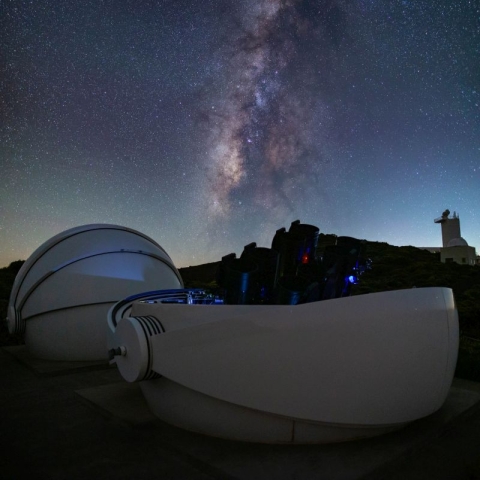
An ear to the sky: ‘Listening’ to the Universe for new perspectives on space
A new project to explore the Universe using sound has been awarded over £500k funding.
27 June 2023
4 min read
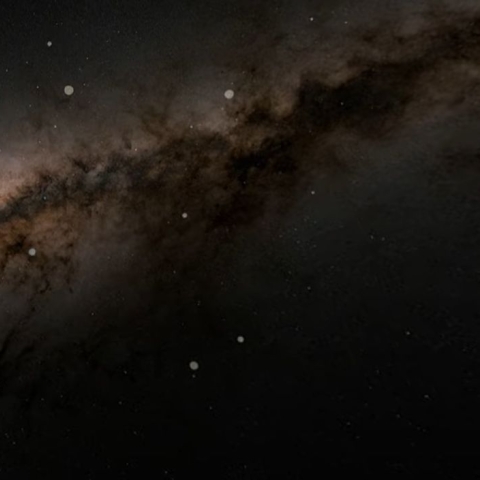
NASA-inspired space mission design facility awarded £100k
A unique new mission design service, inspired by NASA JPL, has won £100k funding from the UK Space Agency for its set-up phase at the University of Portsmouth.
7 June 2023
5 min read
